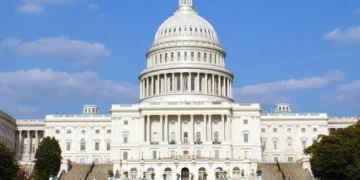The January thaw may be setting in, but the financial markets are about to erupt! January 2024 is brimming with potential, a landscape primed for both bold plays and calculated maneuvers. This month, we’ll dissect the whispers of economic shifts, chart the tides of interest rates, and seize the first fruits of a nascent bull market. Whether you’re a seasoned wolf of Wall Street or a curious financial cub, within these pages lies the arsenal to level up your game. So, sharpen your focus, prime your portfolio, and let’s turn January into a month of green candles and overflowing profits. Welcome to the 2024 Personal Finance Calendar – your monthly guide to navigating the turbulent currents of the financial world and reaching your financial Everest. Buckle up, it’s going to be a wild ride!
January
January 1
- Bank Holiday (New Year’s Day)
- IRS begins the 2024 tax season.
- 2024 Social Security changes kick in:
- Medicare changes
- Changes to retirement savings rules:
January 3
- Economic Data
- ADP Non-Farm Employment Change: This data provides an early look at employment growth.
- ISM Manufacturing PMI: Leading indicator of economic health.
- JOLTS Job Openings: It iimpact the market because job openings are a leading indicator of overall employment.
- FOMC Meeting Minutes: It’s a detailed record of the FOMC’s most recent meeting, providing in-depth insights into the economic and financial conditions that influenced their vote on where to set interest rates
January 4
- Economic Data
- Unemployment Claims: The number of unemployed people is an important signal of overall economic health because consumer spending is highly correlated with labor-market conditions.
January 5
- Economic Data
- Average Hourly Earnings: This is the earliest data related to labor inflation.
- Non-Farm Employment Change: Job creation is an important leading indicator of consumer spending, which accounts for a majority of overall economic activity
- Unemployment Rate: Although it’s generally viewed as a lagging indicator, the number of unemployed people is an important signal of overall economic health because consumer spending is highly correlated with labor-market conditions.
- ISM Services PMI: It’s a leading indicator of economic health
- Employment Situation Report (December)
January 10
- Employees Who Work for Tips Reporting Due Date: If you receive $20 or more in tips in December 2023, you must report them to your employer. You can use Form 4070.
January 11
- Economic Data
- Core CPI and CPI: Consumer prices account for a majority of overall inflation. Inflation is important to currency valuation because rising prices lead the central bank to raise interest rates out of respect for their inflation containment mandate.
- Unemployment Claims: The number of unemployed people is an important signal of overall economic health because consumer spending is highly correlated with labor-market conditions.
January 12
- Economic Data
- Core PPI and PPI: It’s a leading indicator of consumer inflation – when producers charge more for goods and services the higher costs are usually passed on to the consumer
January 15
- Bank and NYSE Holiday (Martin Luther King Day)
January 16
- Economic Data
- Empire State Manufacturing Index: It’s a leading indicator of economic health – businesses react quickly to market conditions, and changes in their sentiment can be an early signal of future economic activity such as spending, hiring, and investment
- Beige Book Release (January)
- Fourth Quarter 2023 Estimated Tax Payment Due: The last day to make tax payments for 2023. Use Form 1040-ES to file estimated payments. However, you don’t have to file a final estimated tax payment if you file your 2023 return (Form 1040 or 1040-SR) by January 31 and pay all taxes due.
January 17
- Economic Data
- Core Retail Sales and Retail Sales: It’s the primary gauge of consumer spending, which accounts for the majority of overall economic activity.
January 18
- Economic Data
- Unemployment Claims: The number of unemployed people is an important signal of overall economic health because consumer spending is highly correlated with labor-market conditions.
January 19
- Economic Data
- Preliminary Univerity of Michigan Consumer Sentiment: Financial confidence is a leading indicator of consumer spending, which accounts for a majority of overall economic activity.
January 24
- Economic Data
- Flash Manufacturing PMI and Flash Services PMI: It’s a leading indicator of economic health – businesses react quickly to market conditions, and their purchasing managers hold perhaps the most current and relevant insight into the company’s view of the economy.
January 25
- Economic Data
- Advance GDP: While this is quarterly data, it’s reported in an annualized format. There are 3 versions of GDP released a month apart – Advance, Preliminary, and Final. The Advance release is the earliest and thus tends to have the most impact.
- Unemployment Claims: The number of unemployed people is an important signal of overall economic health because consumer spending is highly correlated with labor-market conditions.
January 26
- Economic Data
- Core PCE Price Index: Differs from Core CPI in that it only measures goods and services targeted towards and consumed by individuals. Prices are weighted according to total expenditure per item which gives important insights into consumer spending behavior. CPI is released about 10 days earlier and tends to garner most of the attention. It’s the Federal Reserve’s primary inflation measure.
January 30
- Economic Data
- CB Consumer Confidence: Financial confidence is a leading indicator of consumer spending, which accounts for a majority of overall economic activity.
- JOLTS Job Openings: It’s released late, but can impact the market because job openings are a leading indicator of overall employment.
January 31
- Economic Data
- ADP Non-Farm Employment Change: This data provides an early look at employment growth, usually 2 days ahead of the government-released employment data that it’s designed to mimic.
- Employment Cost Index: It’s a leading indicator of consumer inflation – when businesses pay more for labor the higher costs are usually passed on to the consumer.
- Federal Funds Rate: Short term interest rates are the paramount factor in currency valuation.
- FOMC Statement: It’s the primary tool the FOMC uses to communicate with investors about monetary policy. It contains the outcome of their vote on interest rates and other policy measures, along with commentary about the economic conditions that influenced their votes. Most importantly, it discusses the economic outlook and offers clues on the outcome of future votes.
- FOMC Press Conference: The press conference is about an hour long and has 2 parts – first a prepared statement is read, then the conference is open to press questions. The questions often lead to unscripted answers that create heavy market volatility. The press conference is webcasted on the Fed’s YouTube channel in real-time. It’s among the primary methods the Fed uses to communicate with investors regarding monetary policy. It covers in detail the factors that affected the most recent interest rate and other policy decisions, along with commentary about economic conditions such as the future growth outlook and inflation. Most importantly, it provides clues regarding future monetary policy.
- Individuals Who Must Make Estimated Tax Payments Tax-Filing Due (January): If you didn’t pay your final 2023 estimated tax payment by January 16, you can choose to file your income tax return by January 31 and pay any tax due. This prevents you from paying any penalty for your late estimated tax filing. However, if you don’t file and pay by January 31, you can still file and pay by April 15.
Miscellaneous
- Review & refine investment thesis: Analyze your long-term investment goals and risk tolerance. Identify potential sectors or themes with growth potential.
- Set financial goals: Quantify specific goals for income, savings, investment returns, and debt reduction. Use SMART goals framework (Specific, Measurable, Achievable, Relevant, and Time-bound).
- Adjust asset allocation: Rebalance your portfolio to align with your updated risk profile and market outlook. Consider diversification across asset classes and sectors. If you’re retired and drawing from your portfolio, you can combine your portfolio rebalancing with your cash-flow planning for the next 12 months.
- Manage your debt. Start by paying off all of your high-cost, non-deductible credit cards, and then establish an emergency fund equal to three to six months of expenses, if you haven’t already.
- Calculate your 2023 personal net worth.












































